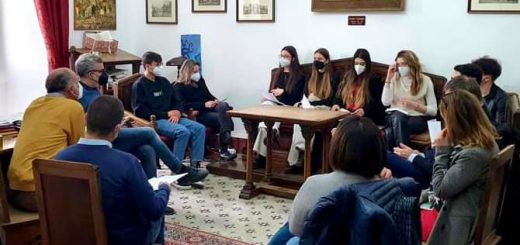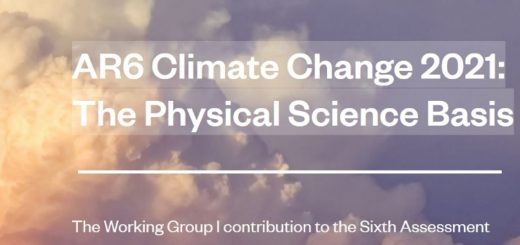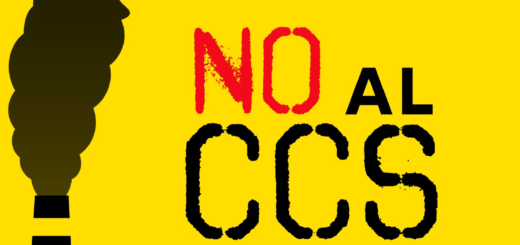n.124: Ottimo contributo di T. Pievani sull’Africa come laboratorio della predazione estrattivista biocida.
Ecology and justice in Africa Telmo Pievani University of Padova ABSTRACT According to robust scientific evidence, the Earth could reach the extreme rates of the past “Big Five” mass extinctions of biodiversity within just few centuries if current threats to many species are not alleviated. Africa is a paradoxical and crucial laboratory in this sense. We know exactly the six interacting causes of the so-called “Sixth Mass-Extinction,” all of them working in Africa as well. All these six proximate causes are related to a remote cause: our predatory economy, our inability to look far into the future, our absurd greed, as in the case of poaching. Biodiversity, economy, and social issues are strictly connected in Africa. Here we argue the reasons why we will never be able to defend biodiversity in Africa and elsewhere if we do not defend social justice and the dignity of the populations that have always lived in the midst of biodiversity. Keywords Sixth Mass-Extinction, Anthropocene defaunation, self-endangered species, niche construction theory, conservation In terms of evolution and biodiversity, Africa is a paradoxical and crucial laboratory. As Edward O. Wilson, Niles Eldredge, and other distinguished evolutionists and biodiversity experts claimed twenty years ago, due to the dramatic rate of extinction of species induced by human activities in recent centuries, the biosphere is going through a planetary “mass-extinction,” meaning a rapid loss of biodiversity on a global scale comparable with the last five catastrophes that we see in the paleontological record, caused by volcanic eruptions, ocean acidification, climatic fluctuations, changes in atmosphere composition, impacts of asteroids on Earth, or a combination of these factors (Wilson 2003). The Sixth Mass-Extinction Africa and its many hot-spots of biodiversity, unfortunately, are at the centre of this crisis. The official label “Sixth Mass-Extinction” was first introduced by paleoanthropologist Richard Leakey and science-writer Roger Lewin to indicate the anthropic sequel of the Big Five massextinctions of the paleontological past, denouncing the destruction of biodiversity (mainly large mammals) in East Africa (Leakey and Lewin 1992). Other pioneering studies gave the first confirmations at the end of the past century (Lawton, May et al. 1995; Pimm et al. 1995). If we compare the rates and amounts of extinction during the mass-extinctions that we see in the FROM THE EUROPEAN SOUTH 4 76 Pievani paleontological record with the range of species losses over the past few centuries, we observe a very similar trend. This time the asteroid is us, Homo so-called sapiens (Kolbert 2014). At that time, the scientific community received the news as an exaggeration, a form of new millenarian “catastrophism.” However, in 2010 Hoffmann et al. reported alarming percentages of extinction in amphibians, corals, freshwater molluscs, sharks, in addition to mammals, reptiles, and birds (see also Butchart et al. 2010; Pereira et al. 2010). Now, 20 years later, we have the data and we have the causes. In March 2011, an international team led in Berkeley by Anthony D. Barnosky verified the measures and came to a rather worrying conclusion, published in Nature: we are very close to the “Sixth Mass-Extinction,” and we are doing nothing to stop it. And Nature is not exactly a journal of radical ecologist militancy. Humans may be more effective exterminators than asteroids and volcanic eruptions. A record that we should not be proud of. The extinction rates of the past 500 years (22% in mammals, 47-56% in gastropods and bivalves) far exceed those recorded in the fossil record for the five major extinctions of the past 540 million years. Thus we are on a mass-extinction trajectory, with accelerating rates: “Our results confirm that current extinction rates are higher than would be expected from the fossil record. […] The Earth could reach the extreme rates of the Big Five mass extinctions within just few centuries if current threats to many species are not alleviated” (Barnosky et al. 2011, 51). According to the refined calculations produced by ecologist Rodolfo Dirzo’s team, at the Department of Biology in Stanford, and published in Science (another very important scientific journal and not a militant one) in 2014, human impacts on animal biodiversity are bringing about global environmental changes that are going to show increasing effects on ecosystems functioning and on the health of our own species. Our planet is no longer the same. Every year we are losing a total amount of 11,000 to 58,000 species, concentrated mainly in tropical regions, and mainly in South America, East Asia, and Africa. One species is being lost every twenty minutes. We are extinguishing species that we have not yet even had time to describe. The frightening technical term coined for this phenomenon by Rodolfo Dirzo in Science is: “Anthropocene Defaunation.” Charismatic vertebrates, particularly mammals and birds, are just a part of the problem. New data collected in a recent global review about the decline of arthropod biodiversity are alarming (Sánchez-Bayo and Wyckhuys 2019). Over 40% of insect species are threatened with extinction (expected in the next few decades if adequate conservation measures are not implemented and prioritised). Lepidoptera, hymenoptera, and dung beetles are the taxa most affected. Habitat loss by conversion to intensive agriculture (using pesticides) is the main driver of the declines. Agro-chemical pollutants, invasive species, and climate change are additional causes. It implies that ecosystem services provided by insects are strongly threatened too. The Millennium Ecosystem Assessment, promoted by the United Nations in 2001, FROM THE EUROPEAN SOUTH 4 Pievani 77 defined “ecosystem services” as all the benefits, direct and indirect, gained for free by humans from ecosystems, in other words from natural environments and their properly-functioning webs of ecological interactions. Examples of ecosystem services are: soil fertility, clean drinking water, land maintenance, the decomposition of wastes, the natural pollination of crops and other plants, etc. According to Gretchen C. Daily and Pamela A. Matson (2008), in order to fight ongoing extinction and impoverishment of ecosystems, we need to recognize “ecosystems as natural capital assets that supply life-support services of tremendous value,” linking conservation and social and economic (sustainable) development. We are not so sapiens. We do not pay money for ecosystem services, therefore we are often unaware of the true cost of maintaining them. But with the disappearance of thousands of species every year, ecosystems are becoming progressively less efficient in ensuring their services, such as water purification, nutrient cycling, and soil maintenance. 75% of food crops in the world depend on pollinator insects, so the dramatic decline of pollinator insects abundance is bad news even for our short-sighted neo-liberal economies. We are trying to become the first “self-endangered” species in the natural history, a record not very honourable (Pievani e Meneganzin). The six causes We know exactly the causes, all of them working in Africa as well. So, no alibi permitted. The human impact on biodiversity is due to a convergence of different and interacting factors (Pievani 2015): 1. Habitat fragmentation and alteration of species-areas relationships (i.e. forest clearance, conversion into pastures and intensive cultivations, mining activities); 2. Invasive species (the inter-continental remixing of alien species due to travel and commerce has been able to cause mass-extinctions in entire regions, in islands and archipelagos); 3. Population growth and urban macro-agglomerates (producing barriers and limitations to the dispersal of animals and plants); 4. Pollution (agricultural, industrial, chemical pollution of air, water and soils); 5. Overexploitation of biological resources by overfishing, overhunting, and poaching. 6. Finally, climate change, producing ecological mismatches in the seasonal cycles of species (mostly in long-distance migratory birds), polar species endangered, and alarming global effects triggered by ocean acidification. 1-6. In addition, we should consider the non-linear interactions between the six forces (for example, fragmentation of territory and global warming in tropical forests; devastating synergic effects of pollution, overexploitation, and climate change on coral reefs). It is a very long story: the destructive environmental impact of our species began in earnest towards the end of the Pleistocene (Cavalli-Sforza and Pievani 2012). The “Anthropocene” FROM THE EUROPEAN SOUTH 4 78 Pievani signals the fact that Homo sapiens has become a dominant evolutionary force (Pievani 2013). All these six proximate causes are related to a remote cause: the needs of our industrial economies, of an expanding population, and of the reinforcement of the transport and trade networks; in other words, our predatory economy, our geopolitical jungle without rules, our inability to look far into the future, and our absurd greed, as in the case of poaching. This is a striking example from Africa. Because of the superstitions of the Homo so-called sapiens, white and black rhinos are on the verge of extinction. This massacre is due to the fact that in the Far East many are convinced that the rhinoceros’ horn (made of the same matter of hair and nails, the keratin) has some miraculous medicinal and aphrodisiac properties. The demand is very high and on illegal markets a horn is worth almost a million dollars today. In Africa then the poachers arrive by helicopter: they can just afford it. At this rate another couple of species (together with many birds, reptiles, and other species) will become extinct due to the superstitions of Homo sapiens. A (risky) niche construction process The human-induced extinction wave we are witnessing today is likely to bring self-harming consequences for our own species, since the ongoing decimation of life-forms is also affecting the life-support conditions and the ecosystem services on which our civilization depends (Daily and Matson 2008, Cardinale et al. 2012, Ceballos et al. 2015). Human dependence and impact on biodiversity have mostly been studied as separated phenomena, but today’s urgency of rethinking the policies of conservation demand an integrated perspective, which must not be confined to merely ethical and emotional appeals. Plants, nonhuman animals, and microbes define the ecological niche we live in – a delicate equilibrium of interdependent relationships, in which we do not only represent the major active modifiers of the environmental states and the selective pressures at work, but we are also modified by the ecological and evolutionary feedbacks that the niche returns to its constructors. Niche construction theory (Odling-Smee, Laland, and Feldman 2003) provides a useful theoretical framework to appreciate the current unsustainability of human niche and the self-endangering feedbacks at stake, providing an integrative scenario in which Homo sapiens can no longer be treated as a mere exogenous phenomenon (Albuquerque et al. 2014). By the time Homo sapiens reached the capacity for ecosystem engineering, the biosphere underwent dramatic changes, with the reshaping of global species distribution and the introduction of new ones. These result from intensive and complex niche construction activities, which respond to the needs of industrial economies, of an expanding population, and of the reinforcement of the transport network (Boivin et al. 2016). In environmental conservation and ecology, the impact of human action has traditionally been investigated in two forms: acute disturbances (drastic environmental changes) and CAD, chronic anthropogenic disturbances (Singh 1998). In the case of tropical forests, where the FROM THE EUROPEAN SOUTH 4 Pievani 79 impact of CAD is most studied, clear-cutting, logging, anthropogenic fires fall within the first definition, whereas the chronic form is characterized by subtler activities that remove only a small fraction of biomass at a time, but at a constant rate and for the long term. Such activities are, to use the same example, the collection of firewood, fodder, and secondary forest products (seeds, leaves, tree oils, etc.). The main problem with the chronic activities is the fact that their persistence does not allow enough time for the ecosystems to recover adequately, making CAD one of the most widespread sources of habitat degradation in developing countries (Singh 1998) and a cause of the decrease of taxonomic and phylogenetic diversities (Ribeiro et al. 2015, 2016). Human-driven ecological disturbances, along with better-known drivers of biodiversity loss, like habitat fragmentation and defaunation, provide important examples of human niche construction, whose effects persist longer than the lifetime of the constructors themselves and are passed on to the following generations (ecological inheritance). In niche construction processes, and mostly in those related to Homo sapiens, populations and environments are engaged in reciprocally caused relationships, including the impact of biodiversity loss on human activities and health. There’s a vast array of phenomena that can be fruitfully analysed from a niche construction perspective, ranging from the ecological and economic impact of pollinator declines, to the global consequences of overfishing and of ocean acidification. There is a burgeoning body of literature that is beginning to show that reduced biodiversity affects the transmission of pathogens to human beings, livestock, wildlife, and plants (Keesing et al. 2010, Civitello et al. 2015, Ostfeld 2017). The reasons behind the inhibitory effect on pathogen displayed by environments with a high biodiversity are linked to biotic homogenization and the so-called “dilution effect,” which arises from the following observations. The majority of infectious human diseases have a zoonotic origin, with pathogens that are for the most part host generalist, meaning that they are capable to infect multiple species of host (which vary in their susceptibility to infection). The reservoir-hosts – the species that are more likely to acquire and transmit diseases – are those who are the most widespread, overrepresented and resilient to the perturbations induced by humans. Consequently, higher interspecific diversity (that includes species sensitive to anthropogenic perturbations) can ‘dilute’ the effect of the reservoir species and the general risk of infection. As an example, a study conducted by researchers at the University of São Paulo, Brazil, found that, in tropical forests, biodiversity can play a role in preventing malaria outbreaks due to two different mechanisms: the dilution effect provided by warm-blooded mammals acting as a biological ‘shield’ for human people, and the competition between vector and non-vector mosquito species for blood feeding (Laporta et al. 2013). Malaria is reported to have caused 429.000 deaths and 212 million of new cases in 2015 (World Malaria Report 2016), making it a concrete threat to nearly half of the world’s population, with Sub-Saharan Africa still carrying the greatest portion of the global burden. FROM THE EUROPEAN SOUTH 4 80 Pievani Another example, from Africa. The Ebola outbreak in West Africa is hypothesized to have been the result of a combination of policy-driven changes in Guinea and Liberia, brought about by neoliberal development (Wallace et al. 2014). The increase in oil palm plantation in Guinea’s forested regions seems to have strongly impacted the forest epi-zoology. The first case of Ebola outbreak in West Africa was documented in the Guéckédou area, with a landscape characterized by a mosaic of villages enclosed by dense vegetation, with crop fields of oil palm that provide an ideal man-bat interface. Frugivorous bats are a key Ebola-reservoir and they are attracted to oil palm trees, where they migrate searching for food and shelter, thus shifting their foraging behaviour as the forest gradually disappears. The lethal virus can be transmitted through direct contact with the infected animal, via contaminated body fluids. As confirmed in an another study in 2017, deforestation is likely to push infected wild animals in areas inhabited by humans, increasing the probability of contact between them, by disrupting animal movements and population densities (Olivero et al. 2017). This provides a straightforward case of undesired feedbacks induced by politically – and economically – driven niche activities that impact the population distribution of the endemic fauna and the ecosystem ecology in general, reminding the representatives of Homo sapiens of their role and weight in the interconnected nature of an ecosystem. Conservation and social justice Biodiversity, economy, and social issues are therefore strictly connected, more than usually expected. We change the environments, and the environments change us. If this is true, a hidden hope could emerge. As niche constructors, we could reverse the process. In Africa there are very different types of nature reserves and protected areas. From Kenya to South Africa, the most renowned parks are invaded by caravans of visitors, involved in the safaris. When an elephant appears, you see a queue of vehicles like in the highway. The animals have become addicted and show off, except to get nervous sometimes for the trouble. Sick animals are not shown. Nature is softened for invasive tourism. But if a leopard walks on the hood of your jeep, you or the leopard have done something wrong. The experience may be thrilling, but dangerous, because the leopard is the predator while we come from a long evolutionary career as preys. Yet on the net there are plenty of scenes of lions cuddled under the acacias and canoes that defy the fangs of hippopotamus mothers. In other reserves the owners decided to make natural selection on customers, asking for very expensive prices for lodging and stay. But if environmentalism becomes a luxury for the few, it can hardly affect the effective conservation of the wildlife. Again, in other private reserves, mainly in South Africa, the very rich customers can shoot the animals. The chosen victims must die on the spot and bleed as little as possible, so that the trophies over the fireplaces may be exposed in their untouched integrity without any blood stains: this is really the most unfair sport in history. And it has nothing to do with conservation. FROM THE EUROPEAN SOUTH 4 Pievani 81 Hopefully, we can think differently. In Africa, and this is my favourite laboratory, a lot of reserves in several countries, even small reserves, are experimenting with new forms of sustainable and respectful tourism, whose gains are devoted to both conservation and research. Few tourists, no more than a dozen at a time, sleep and eat in lodges by the river, jeeping from dawn to sunset with the guides to observe, at a distance of respect, the animals in their natural behaviours. International teams of scientists study wildlife and deal with environmental conservation strategies, also with the help of eco-volunteers from all over the world. The problem is that such reserves are small handkerchiefs scattered in the African immensity. Several projects under study plan to unite some of them to create large crossborder African parks. Furthermore, in many of these new generation reserves the revenues are partly allocated to social activities in favour of surrounding local communities, which actively participate in conservation through educational and employment programmes. Biodiversity becomes an opportunity of social and economic development. In some cases, local communities and native peoples have become the direct managers of natural reserves, in partnership with the scientists (like in the case of Floreana island, in Galápagos archipelago, UNESCO world heritage, where the small and proud local community is now the main ally of scientists in preserving biodiversity, extirpating alien species, and sharing the economic profits from selected tourism). Instead of ruining the environment by grazing the cows or cutting the trees to make firewood, local and native communities can directly manage the environment as a shared resource, thanks to the use of operators and the proceeds of eco-sustainable tourism and educational projects. In Africa we see how much natural, cultural, and social evolution are interlaced. Zoological gardens all over the world are funding similar cooperation projects with local population for the conservation of wildlife. Plants and animals at risk for the most part live in the poorest countries, afflicted by social inequalities, reckless exploitation of resources, corrupt local politicians ready to sell off the territory to foreign investors, the impact of increasing global warming, and extreme weather events. The hyper-protected sanctuaries of nature, reserved for a lucky few, are no longer enough. It is unrealistic to think that conservation policies can work if they are administered paternalistically from above, without a concrete return to local communities. We will never be able to defend biodiversity in Africa and elsewhere if we do not defend social justice and the dignity of the populations that have always lived in the midst of that biodiversity. References Albuquerque, Ulysses Paulino, et al. 2018. “Humans as Niche Constructors: Revisiting the Concept of Chronic Anthropogenic Disturbances in Ecology.” Perspectives in Ecology and Conservation 16: 1-11. FROM THE EUROPEAN SOUTH 4 82 Pievani Barnosky, Anthony D., et al. 2011. “Has the Earth’s Sixth Mass Extinction Already Arrived?” Nature 471: 51-57. Boivin Nicole L., et al. 2016. “Ecological Consequences of Human Niche Construction: Examining Long-Term Anthropogenic Shaping of Global Species Distributions.” PNAS, Proceedings of the National Academy of Sciences of the United States of America 113 (23): 6388-6396. Butchart, Stuart H.M., et al. 2010. “Global Biodiversity: Indicators of Recent Declines.” Science 328: 1164-1168. Cardinale, Bradley J., et al. 2012. “Biodiversity Loss and its Impact on Humanity.” Nature 486: 59-67. Cavalli Sforza, Luigi Luca, and Telmo Pievani. 2012. Homo sapiens: The Great History of Human Diversity. Turin: Codice Editions. Ceballos, Gerardo, et al. 2015. The Annihilation of Nature: Human Extinction of Birds and Mammals. Baltimore: John Hopkins University Press. Civitello, David J., et al. 2015. “Biodiversity Inhibits Parasites: Broad Evidence for the Dilution Effect.” PNAS, Proceedings of the National Academy of Sciences of the United States of America 112: 8667-71. Daily, Gretchen C., and Pamela A. Matson. 2008. “Ecosystem Services: From Theory to Implementation.” PNAS, Proceedings of the National Academy of Sciences of the United States of America 105: 9455-9456. Dirzo, Rodolfo, et al. 2014. “Defaunation in the Anthropocene.” Science 345: 401-406. Hoffmann, Michael, et al. 2010. “The Impact of Conservation on the Status of World’s Vertebrates.” Science 330: 1503-1509. Keesing, Felicia, et al. 2010. “Impacts of Biodiversity on the Emergence and Transmission of Infectious Diseases.” Nature 468: 647-52. Kolbert, Elizabeth. 2014. The Sixth Extinction: An Unnatural History. New York: Henry Holt. Laporta, Gabriel Zorello, et al. 2013. “Biodiversity Can Help Prevent Malaria Outbreaks in Tropical Forests.” Plos: Neglected Tropical Diseases, 7 (3): 1-12. Lawton, John H., and Robert May, editors. 1995. Extinction Rates. Oxford: Oxford University Press. Leakey, Roger, and Richard Lewin. 1992. The Sixth Extinction: Patterns of Life and the Future of Humankind. London: Doubleday. Odling-Smee John, Kevin Laland, and Marcus Feldman. 2003. Niche Construction: The Neglected Process in Evolution. Princeton: Princeton University Press. Olivero, Jesús, et al. 2017. “Recent Loss of Closed Forests Is Associated with Ebola Virus Disease Outbreaks.” Scientific Reports 7 (14291): 1-9. Ostfeld, Richard. 2017. “Biodiversity Loss and the Ecology of Infectious Disease.” Lancet Planet Health 1: e2-e3. Pereira, Henrique M., et al. 2010. “Scenarios for Global Biodiversity in the 21st Century.” Science 330: 1496-1501. Pievani, Telmo. 2013. “The Sixth Mass-Extinction: Anthropocene and the Human Impact on Evolution.” Rendiconti Lincei: Scienze fisiche e naturali 25 (1): 85-93. Pievani, Telmo. 2015. Earth’s Sixth Mass-Extinction Even. Online Reference Database Earth Systems and Environmental Sciences. Pievani, Telmo, and Andra Meneganzin. (2019, forthcoming). “Homo sapiens: The First SelfEndangered Species.” In People, Nature and Environments: Learning to Live Together, FROM THE EUROPEAN SOUTH 4 Pievani 83 edited by Ana Cristina Roque, Cristina Brito, and Cecilia Veracini. Newcastle Upon Tyne: Cambridge Scholars Publishing. Pimm, Stuart, et al. 1995. “The Future of Biodiversity.” Science 269 (5222): 347-350. Ribeiro, Elâine M.S., et al. 2016. “Phylogenetic Impoverishment of Plant Communities Following Chronic Human Disturbances in the Brazilian Caatinga.” Ecology 97 (6): 1583-92. Sánchez-Bayo, Francisco, and Kris A. G. Wyckhuys. 2019. “Worldwide Decline of the Entomofauna: A Review of its Drivers.” Biological Conservation 232: 8-27. Singh, S.P. 1998. “Chronic Disturbance, a Principal Cause of Environmental Degradation in Developing Countries.” Environmental Conservation 25 (1): 1-2. Wallace, Roger G., et al. 2014. “Did Ebola Emerge in West Africa by a Policy-Driven Phase Change in Agroecology? Ebola’s Social Context.” Environment and Planning A 46 (11): 2533-2542. Wilson, Edward O. 2003. The Future of Life. New York: Vintage. World Malaria Report 2016. Geneva: World Health Organization. Telmo Pievani is Full Professor at the Department of Biology, University of Padova, where he holds the first Italian chair of Philosophy of Biological Sciences. Since October 2016, he has been the Rector’s Delegate for Institutional Communication, University of Padua and, since 2017, he has also been the President of the Italian Society of Evolutionary Biology. He is the author of 242 registered publications. Among them, his most recent books are Libertà di migrare (The Freedom to Migrate, Einaudi 2016, with V. Calzolaio), Evoluti e abbandonati (Evolved and Abandoned, Einaudi 2014), and Anatomia di una rivoluzione. La logica della scoperta scientifica in Darwin (Anatomy of a Revolution. The logic of scientific discovery in Darwin, Mimesis 2013). He has been the curator of several national and international exhibitions, including Darwin 1809-2009 (with Niles Eldredge and Ian Tattersall), Homo Sapiens (with Luigi Luca Cavalli Sforza), Garden of Biodiversity and DNA. The book of life from Mendel to genomics. He is also a columnist for Il Corriere della Sera and for the magazines Le Scienze and Micromega.









